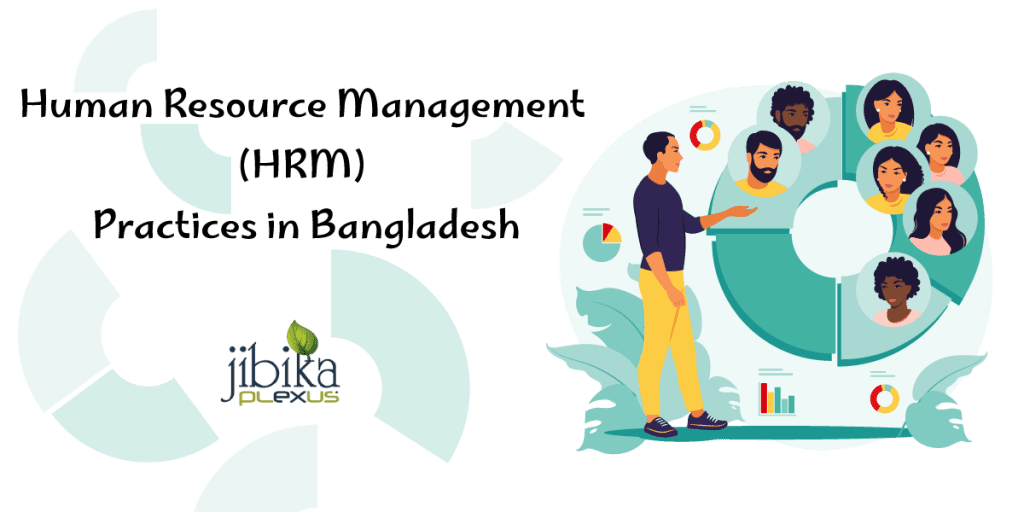Since 1971’s independence, Bangladesh has experienced significant economic growth to battle hunger and poverty. As the time progressed, this country has managed to accelerate national GDP at a remarkable percentage that Bangladesh has managed to qualify itself from underdeveloped to developing country as per the criteria set by the United Nations. Keeping pace with this growth, the country has focused on industrial sector speciality productivity and efficiency. More importantly, one of the major factors of productivity is Human Resources to ensure desired economic prosperity.
The HRM or Human resource management practices have been evolving for years in order to combat the challenges like operational incompetence, managerial inefficiency and labor productivity. With strategic and efficient HRM practices, Bangladesh has experienced remarkable economic growth. This article aims to address the key human resource management practices in Bangladesh.
Human Resource Management (HRM) Practices in Bangladesh
Practicing human resources services is a must for any business these days. This helps the company to ensure managerial sector management strategically and on the other hand, allows the HRM team to maximize the performance of employees. Depending on the requirements and challenges of each company, the HRM features can be customized. The global HRM features and International standards are also implemented in Bangladesh in order to develop the workforce management.
Having said that, the HRM practices in Bangladesh vary from different sectors and organizations. It’s basically a blended combination of traditional and modern practices. Here are some of the key practices that you will notice more or less adopted in Bangladeshi companies.
1. Recruitment and Selection
Recruitment methods:
Due to the emerging HRM practice in Bangladesh, there has seen a tremendous change in recruitment and selection process. Posting job offers online portals, newspapers or websites are common scenarios in the context of Bangladesh. Companies also arrange recruitment events on university campuses. You will observe companies to recruit employees in internal and external methods.
Selection process:
Though the companies leave no platforms for recruitment, the selection process is challenging for the applicants. The companies receive tons of resumes but select only eligible ones according to their company requirements. After screening the resume, there are several rounds that an applicant has to go through including written tests, interviews, psychometric tests, skill assessments and some companies also ask them to demonstrate their ability for evaluating the candidate.
Challenges: In this process, the biggest challenge is not receiving resumes with compatible educational qualifications with job responsibilities. Since the companies tend to recruit internally as well, there is a high practice of biases and nepotism. This leads to unfair recruitment where the eligible candidate gets rejected.
2. Training and Development
Training is very crucial to motivate and develop the skills of the employees. How the training programs are arranged depend on the organization’s protocol.
In-house and external training: For any training program, the companies have a certain budget to invest. In Bangladesh, companies arrange in house and external training programs. Large companies and well established companies arrange training programs such as leadership skills, communications, technical skills and so on.
Skill development initiatives: An employee can grow if he invests his time in skill development. The companies also understand this fact, hence, they prioritizes on developing employees workforce skillset to ensure utmost productivity. In doing so, governmental, non governmental and MCS collaborate with training institutes to facilitate their employees’ skill development. Sectors that are more focused for skill development are IT, manufacturing and soft skills.
Challenges: In the training and development sector, the companies have limited or small budgets. Even if the companies arrange the training programs, they are less aware about the impact of the training. Hence, in most cases the training program becomes less beneficial for the employees which they can hardly apply in their work.
3. Performance Management
Most of the well established companies offer performance bonuses. For this, the companies maintain a certain formula and strategy to calculate the performance of each employee. The HRM software has made this job easy and effective.
Appraisal systems: Generally, the performance management in bangladesh is calculated half yearly or annually. Some companies adopts quarterly feedback method. It also depends on the company how they want to send out the performance incentive. Mostly, they are given a performance bonus, promotion or salary increment.
Methods: To calculate the performance of the employees, KPI or key performance indicators are used. The software will give the HR team a 360 degree feedback and objective based reviews.
Challenges: Here, the challenge in the performance management system is favoritism in reviews and lack of transparency. Since different companies prioritize different factors, there are no standard metrics to evaluate the performance in a fair manner.
4. Compensation and Benefits
Salary is the most crucial part of every organization which motivates the employees to work with effort. The salary structure depends on various factors varying companies.
Salary structures: Generally, the salary is determined based on the industr standard, size of the company and employee’s work experience. Compared to the public sectors, the employees get better payment and additional benefits in private and multinational corporations. Not only that, the employees get benefits like provident fund, overtime, festival bonus, health insurance and so on.
Challenges: Though the private sector pays better than the public sector, there is a wide disparity in terms of wage varying sectors and within the company as well.
5. Labor Laws and Regulations
Every company has to abide by the laws and order of Bangladesh. From company license registration to employee wages must be according to the legal framework.
Legal framework: There are a set of labor laws in Bangladesh in order to ensure fair wages, working environment and employee rights. According to The Bangladesh Labor Act of 2006 and the Bangladesh Labor Rules of 2015, every company has to abide by the primary legal framework that includes working hours, leave entitlements, contracts and many more.
Challenges: The biggest challenge here is companies don’t follow the rules properly, especially the garment sectors. The worker rights are exploited and they don’t get payment on time. Wages like overtime are often ignored as workers are not aware about their rights and they are less powerful than the owners.
6. Employee Relations and Engagement
Recently, companies focus on building good relationships with their employees. It’s part of increasing productivity and reducing the turnover rate.
Employee engagement practices: in order to build strong relationships among employees, companies in Bangladesh are taking initiatives like team building training, activities, incentives, recognition programs and so on.
On behalf of the workers, the trade union advocates for their rights where the most mismanagement happens such as textile, construction and manufacturing sectors. Though the effectiveness of this trade union is often questioned, it’s somewhat working towards the betterment of the working environment.
Challenges: while building better relationships among employees, the biggest challenge is communication. It’s also difficult to maintain a healthy relationship between management and employees.
7. HRM Trends in Bangladesh
When every sector is digitized worldwide, Bangladesh has to be at the same pace. Hence, the companies are also adopting HR softwares for managerial purposes.
Technology adoption: using HR software, the companies can now easily manage slow and repetitive tasks like payroll management, performance review, recruitment tasks and many more. The automated process and software formula are making these HR tasks efficient and error free.
Focus on diversity and inclusion: embracing the HR software, the employees are also able to observe their growth and be aware where they need to work on more. It also helps them to create a inclusive workplace and promote gender equality and hire qualified people from diverse background
Corporate social responsibility (CSR): with the HRM software, the companies are also integrating CSR initiatives such as participating in community development and voluntary programs.
Final Thought
Here is a brief overview about the Human Resource Management (HRM) Practices in Bangladesh. The HRM practices are becoming more modernized, sophisticated which bring noticeable change HR strategies and business goals.
Even though there are some challenges in recruitment, labor laws, gender equality and skill differences in the workforce, the new HRM practices are bringing positive change in economic growth. As the time passes, it will bring more advancement in technology and employee engagement.







